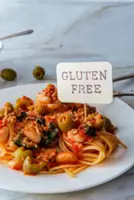Experts have said that occasional bingeing on festive treats is not as big of a cause of concern as limiting the intake of ultra-processed foods throughout the year. — TIM DOUGLAS/Pexels
It was amusing to learn that the word of the year for 2024 is “brain rot”, according to the publishers of the Oxford English Dictionary. But it is also a little sad, as brain rot is defined as “the deterioration of a person’s mental or intellectual state resulting from the overconsumption of material (particularly online content) considered to be trivial or unchallenging”.
It refers to the impact of consuming excessive amounts of low-quality online content, especially on social media. It does not take long to figure out that there can never be any good outcomes of brain rot, and it becomes another modern-day malady which can affect people of all ages.
The Cambridge Dictionary’s word of the year is “manifest”, which is a trend to imagine oneself achieving a goal in the hope that the goal will happen. Whether “manifesting” replaces real effort, diligence, and ability is unclear, but it appears easier to wish for or “manifest” a goal than actually working for it. Perhaps there is some manifestation of brain rot in there somewhere.
Bingeing on food is okay, sometimes
Several of the UK’s top nutritionists have given the green light to binge-eat during the Christmas festivities. Well, sort of.
Christmas is synonymous with the over-consumption of carbohydrates, proteins, fats, sugars, and ultra-processed foods (UPFs) like cakes, snacks, and confectioneries. However, experts suggest that occasional festive treats should not be a cause for concern; rather, the focus should be on reducing the high consumption of UPFs throughout the rest of the year.
Basically, people should not feel guilty about their holiday eating habits, and time-saving pre-prepared UPF meals can help family spend more time together. This may or may not be aided by some generous sharing of alcoholic drinks, something that I personally find helpful.
At seasonal festivities, food serves not only to feed, but also to foster closer social and family connections. And in these days of brain rot, closer ties with real people is infinitely preferable to mindless social media content, even if it means a dose of UPFs. There is always time to rebalance the diet after the bingeing. And cut back down on the alcohol.
Bingeing on plastics is never okay
Many people may not be aware of this, but 2024 was supposed to be a pivotal year for controlling plastic pollution on our planet. At last, it seemed that global initiatives may finally be undertaken to limit and manage the toxic environmental impacts of plastic pollution.
However, UN-led negotiations in Busan, South Korea, aimed at establishing a landmark treaty to combat plastic pollution have concluded without reaching an agreement. Nearly 200 nations participated in discussions that were intended to finalise the first legally binding treaty by the end of 2024.
However, deep divisions emerged between “high-ambition” countries advocating for strict production limits and a phase-out of harmful chemicals, and “like-minded” nations focusing on waste management. This discord is the intended result of over 220 heavily-funded representatives from the fossil fuel and chemical industries lobbying for inaction. And the scientific community represented by the “Scientists’ Coalition for an Effective Plastics Treaty” was swamped by lobbyists for the plastics industry by a ratio of three to one at the conference.
Despite a draft text being released, significant disagreements persisted, particularly over whether to impose limits on plastic production. The conference finally acknowledged that unresolved issues remain and “additional time” will be required to address them.
Without a binding plastics treaty, the current production of plastics will continue unabated at 460 million tonnes per year, rising to an incredible 1.3 billion tonnes per year projected by 2060.
This fantastic amount of plastic affects Christmas and other seasonal festivities, because there are normally huge spikes of plastic consumption and disposal around such periods.
Many of the decorations on Christmas trees are made of plastic, and so are most of the trees themselves. Even Christmas food is often heavily sealed in strong, dense plastic containers and bags.
In the UK, plastic waste rises by an estimated 30% during Christmas, with each household generating three full black bags of plastic packaging waste on average, or around 125,000 tonnes per Christmas.
Much of the wrappings and packaging are simply thrown into landfills where they will pollute the land, water and air for thousands of years. That is because plastics will never decompose into any “natural” product, as they just erode down into smaller and smaller particles, from visible pieces, down to micro-plastics and then to nano-plastics, while their constituent chemicals and toxins persistently leach into the environment, to be consumed by fauna and then humans.
Why so much plastic?
The marketing strategies employed during Christmas play a crucial role in promoting plastic use. Retailers capitalise on the festive spirit by offering deals on products that come with excessive plastic packaging.
The message cannot be clearer, even though we do not often hear it well: Convenience and indulgence is more important than sustainability. In summary, the festive buzz simply causes consumers to make purchases without considering their environmental impact, and marketers really prefer their customers to keep behaving like this.
AEPW and the non-recyling of plastic
At this point, one needs to understand exactly what “greenwashing” means. And nowhere is this term better exemplified than by the Alliance to End Plastic Waste (AEPW).
“Greenwashing” refers to the use of misleading marketing practices where companies present an exaggerated or false image of environmental responsibility. The AEPW has been criticised for employing heavily-funded greenwashing tactics that obscure the actual impact of its members on plastic pollution.
A recent report from Planet Tracker labelled the AEPW’s initiatives as “sophisticated greenwashing,” and it highlighted several key issues:
Worthless targets: Despite ambitious claims, the AEPW has failed to meet any meaningful recycling targets. For example, it aimed to recycle nine million tonnes of plastic in its first three years but achieved only 0.04% of that goal, or only around 3,600 tonnes in total.
Note that nine million tonnes over three years is just three million tonnes a year (or 0.65%), out of an annual production of 460 million tonnes of plastics a year. And the achieved recycled amount was only 1,200 tonnes per year, an amount so small (0.00026%) relative to the total that it might as well be zero. Also, members of the AEPW currently produces 132 million tonnes of plastic every year.
“Green crowding”: This term describes how the AEPW member organisations hide behind collective efforts while moving at the pace of their slowest members (if they move at all). Many AEPW members are also part of influential well-funded groups that lobby against effective policies for reducing plastic production.
Misleading public perception: By presenting themselves as leaders in sustainability while failing to deliver results, the AEPW contributes significantly to public confusion about corporate environmental efforts. Many advertised plastic recycling “initiatives” are part of how the AEPW misleads the public about the impacts of plastic pollution.
The consequences of greenwashing extend much beyond misleading consumers because they hinder genuine progress towards sustainability. When organizations like the AEPW fail to deliver on their promises, it erodes public trust in environmental initiatives and can lead to:
Consumer apathy: If consumers are misled into believing that corporations are adequately addressing plastic waste, they may feel less compelled to change their own behaviours.
Global and governmental policy inaction: Greenwashing is deliberately aimed at slowing down legislative efforts aimed at reducing plastic production and waste.
Plastic waste management
So how are plastic wastes managed? The answer is sobering. At present, it is estimated that around 400 million tonnes of plastic waste is generated globally every year. Of this amount, 50% end up on landfill sites, 19% is incinerated, and 9% is recycled (due to public waste management programmes).
The balance of 22% is disturbingly classified as “mismanaged”, meaning that there are no known collection or disposal processes applied, so it can only mean that 22% of the world’s plastic waste is left scattered around to pollute the environment.
Looking ahead, if current trends continue without significant intervention, then the following outcomes are highly probable:
Increased waste generation: Global plastic waste would reach 1.3 billion tonnes by 2040 if no action is taken.
Biodiversity loss: Many species, particularly marine and aquatic fauna, face extinction due to habitat destruction caused by plastic pollution.
Climate change acceleration: The production and incineration of plastics contribute significantly to greenhouse gas emissions.
Human health impacts: It is now established that plastics cause chronic diseases in humans, including cardiovascular diseases, cancers, birth defects, respiratory disorders, diabetes, autoimmune conditions, etc. The persistent and growing exposure of humans to air, water, foods, and environments contaminated by plastics and associated toxins will certainly have a pandemic-like effect on human health around the world within the next few decades.
Back to Christmas
This is my last column of the year, and despite the overall stark tone today, I would like to wish everyone very happy celebrations for the coming festive season. Perhaps times like this are also the best times to reflect, especially with family and friends, on our consumption patterns and their impact on our planet.
If brain rot happens due to frivolous online content, then it might be suggested that our Earth’s “plastic rot” is happening due to ill-considered consumption habits. Both kinds of rot can be cured – they just require motivation and awareness. And a certain degree of kindness and consideration for others and future generations. In the end, that may be the best present one can give.
The views expressed here are entirely the writer’s own.






